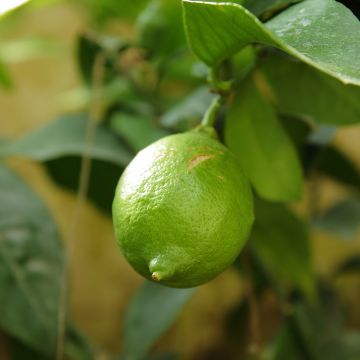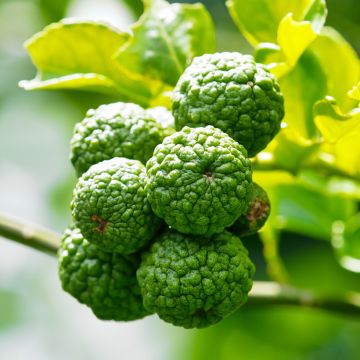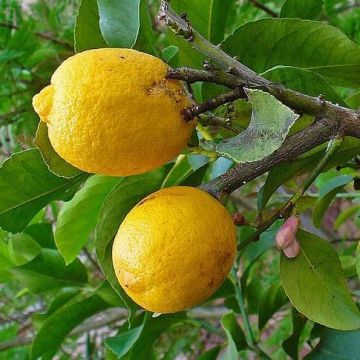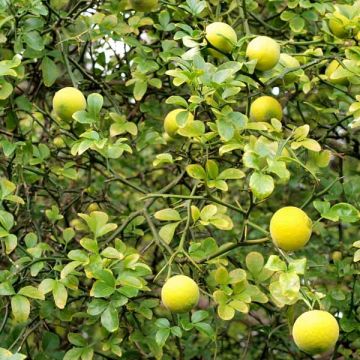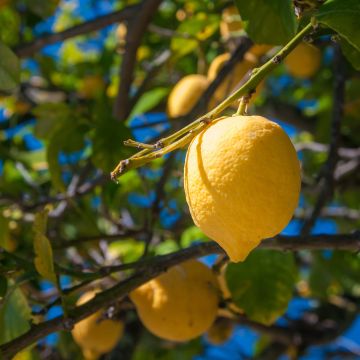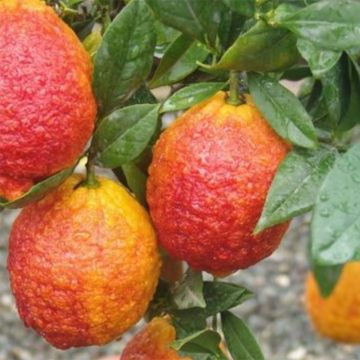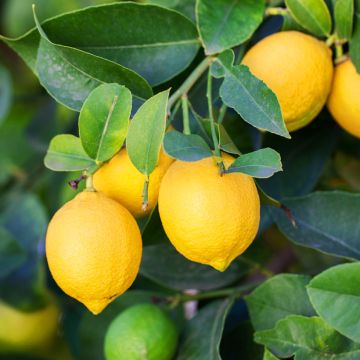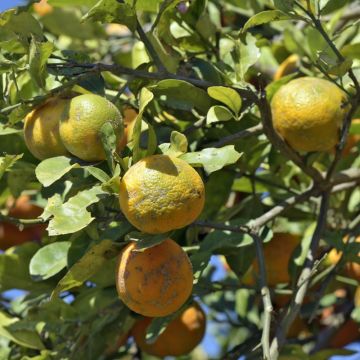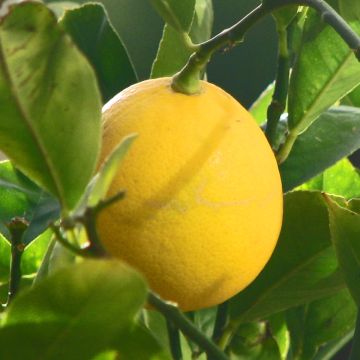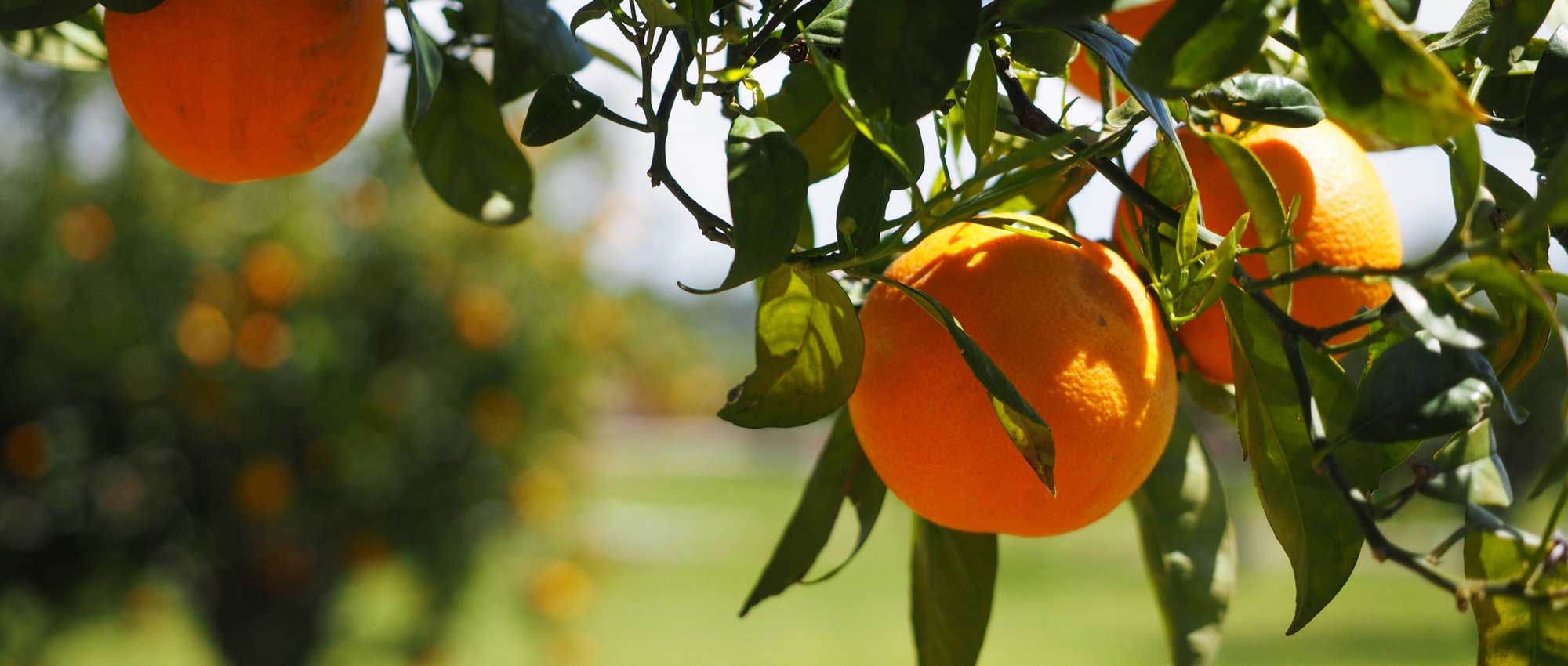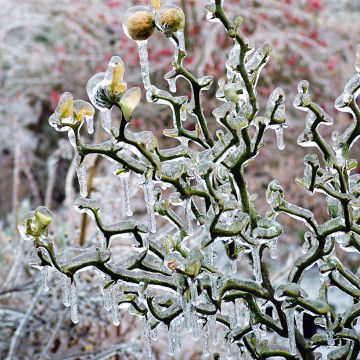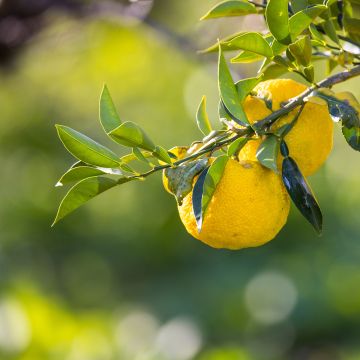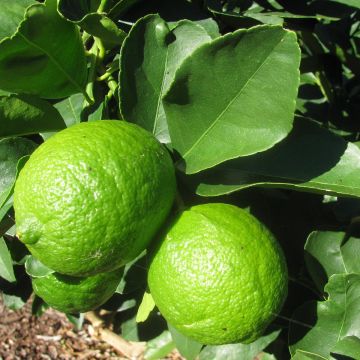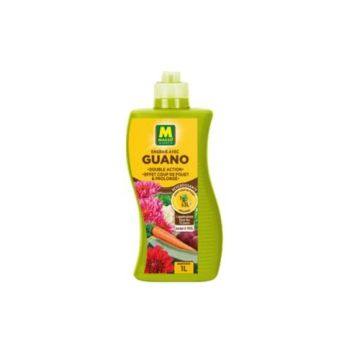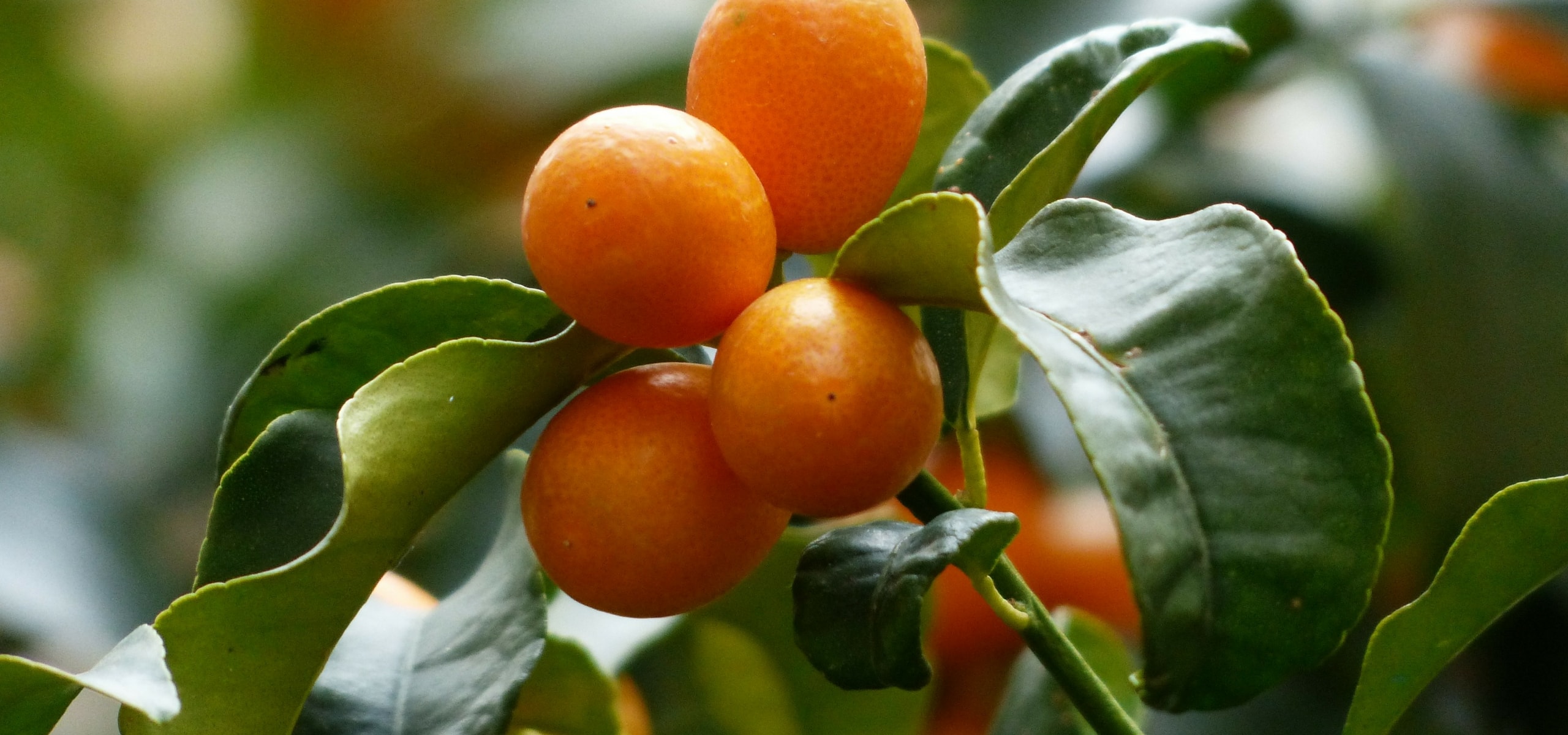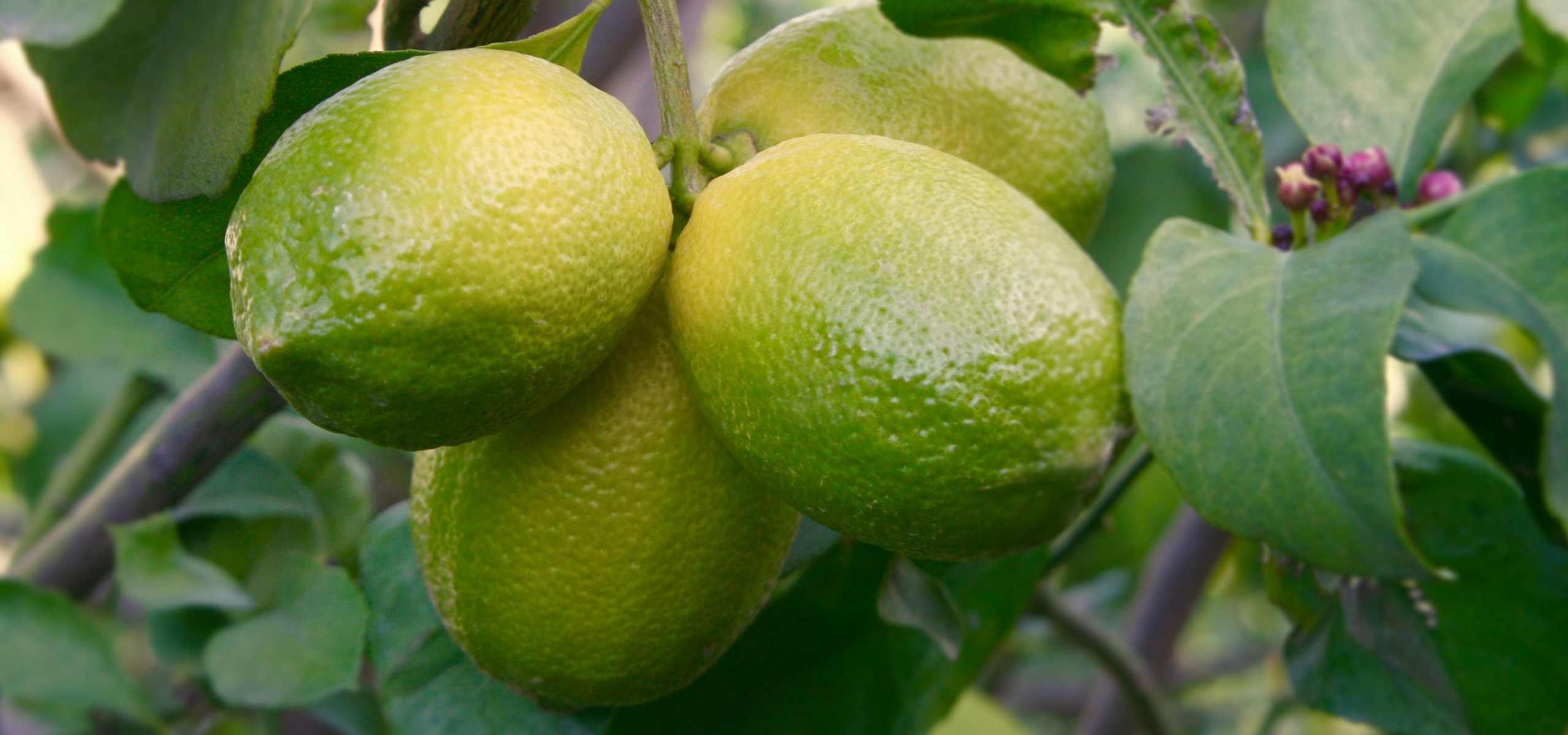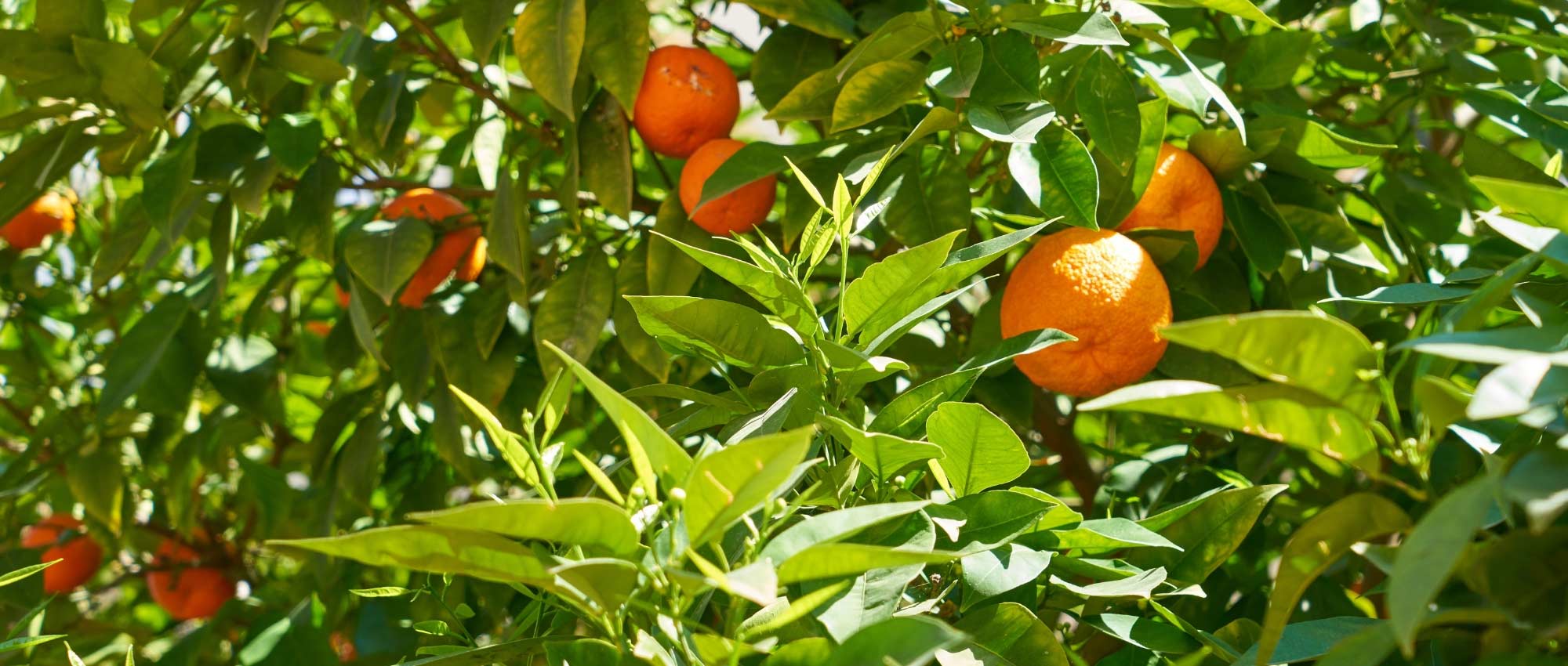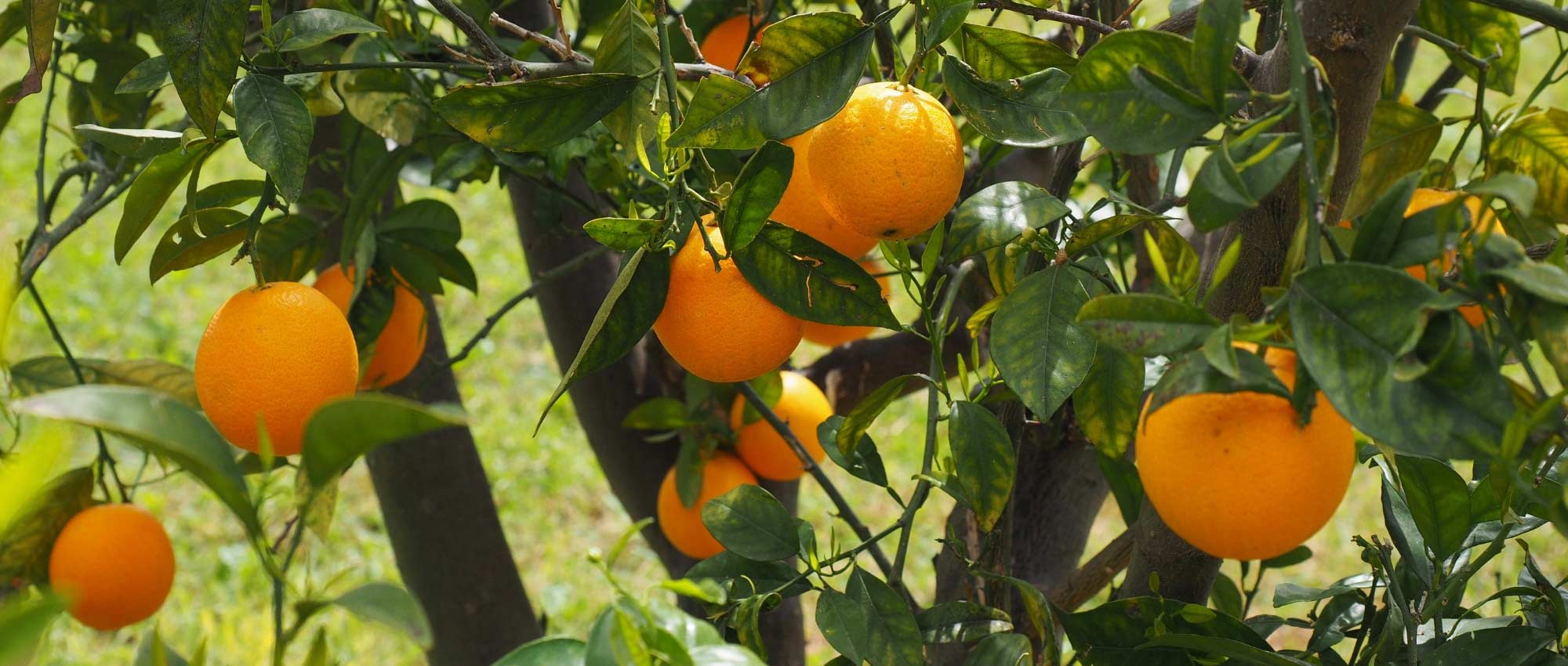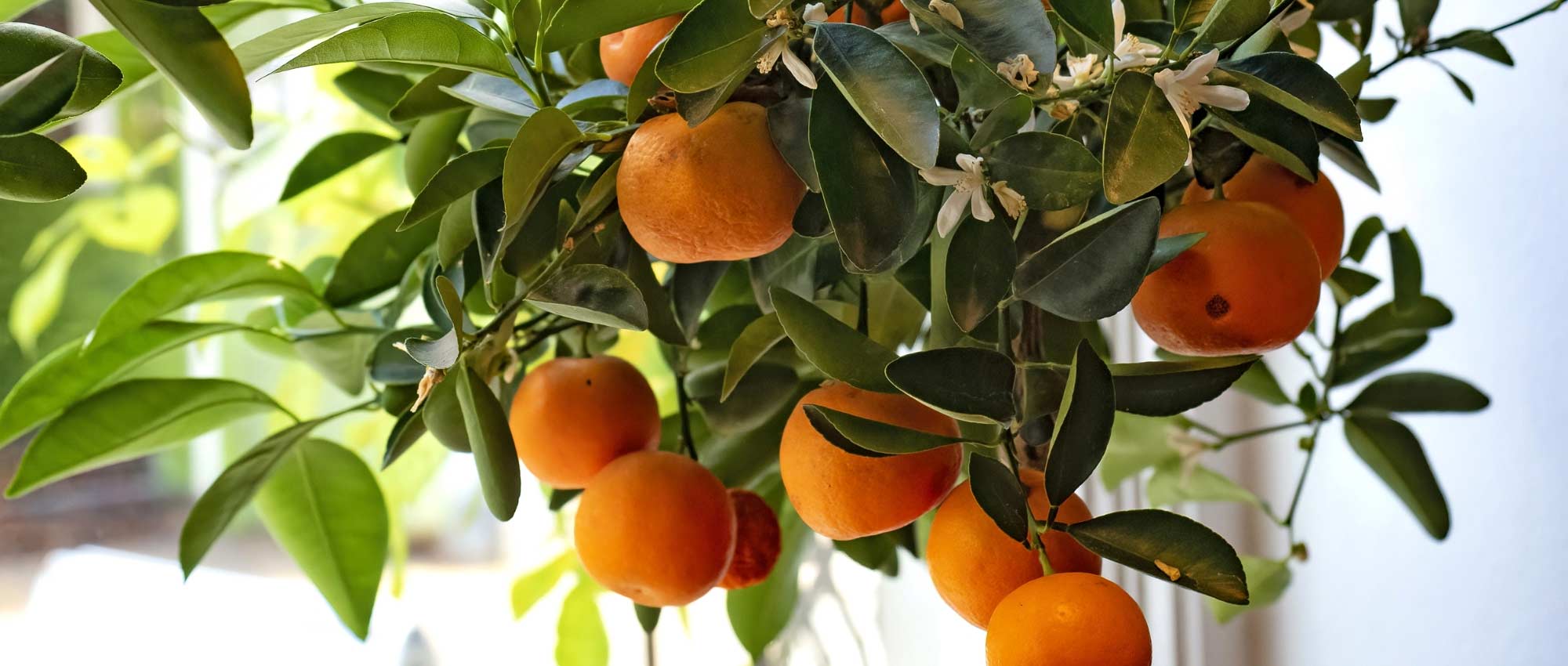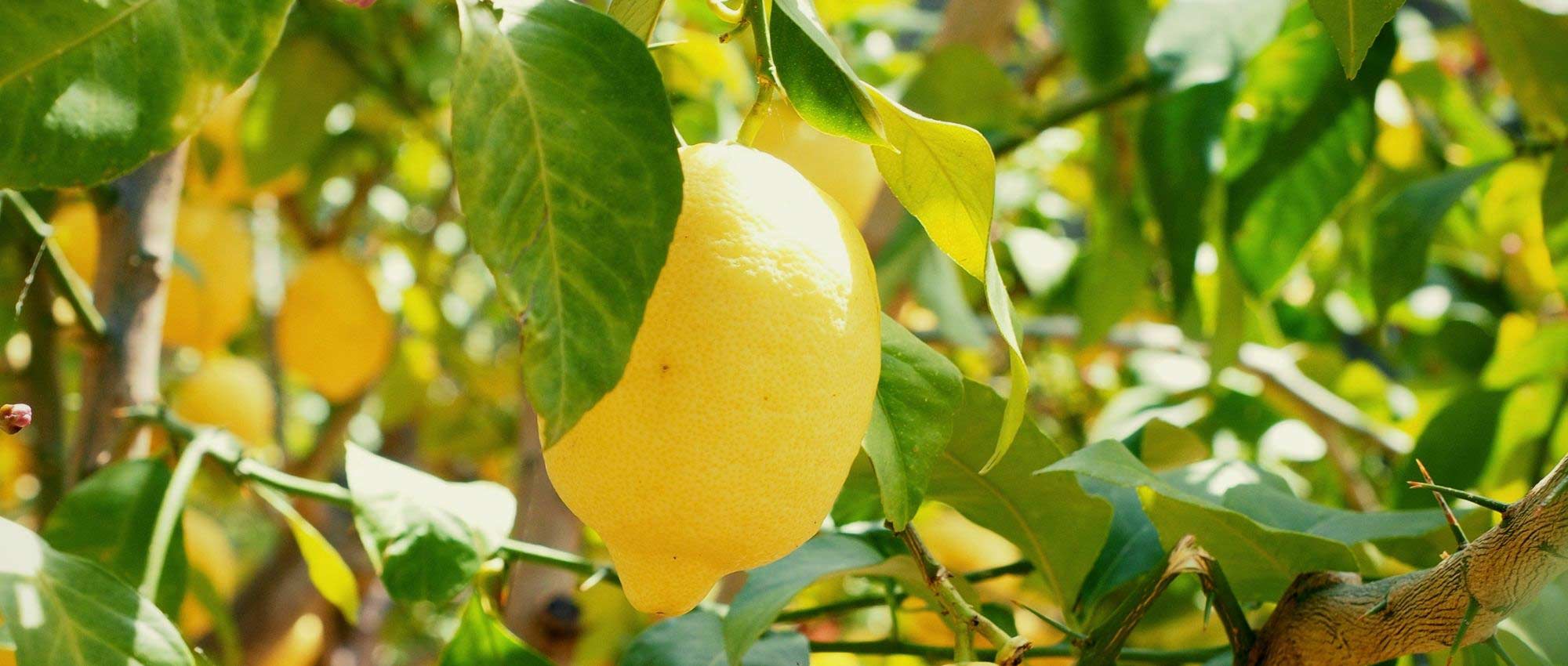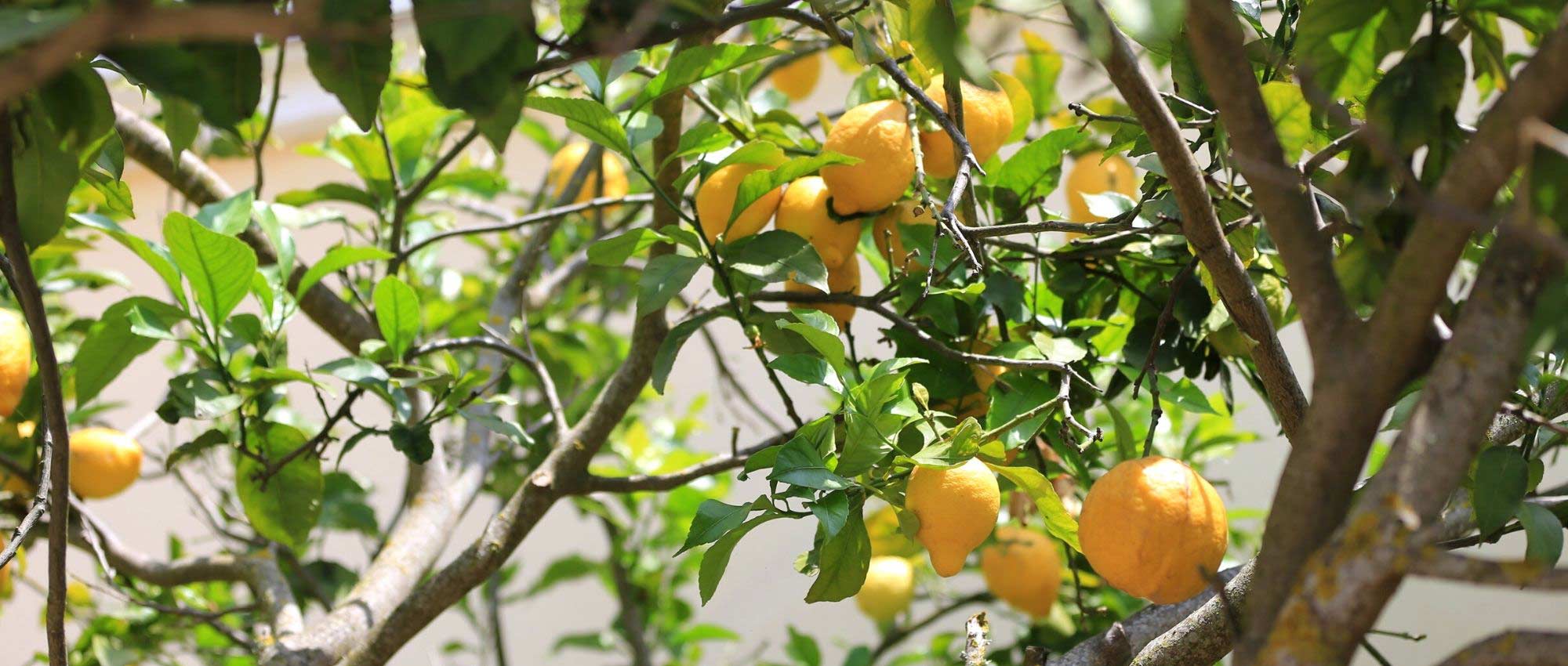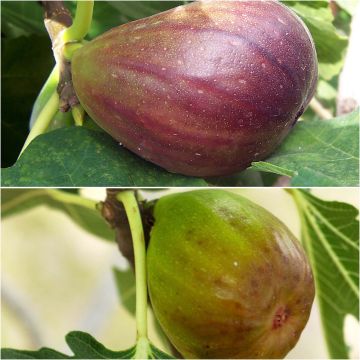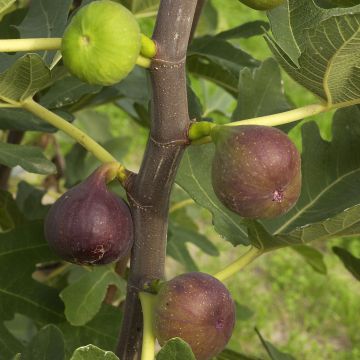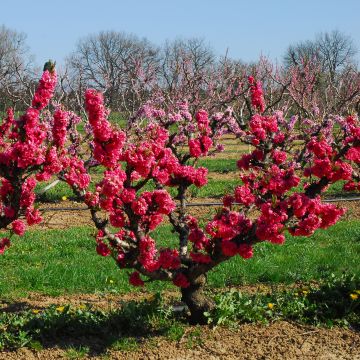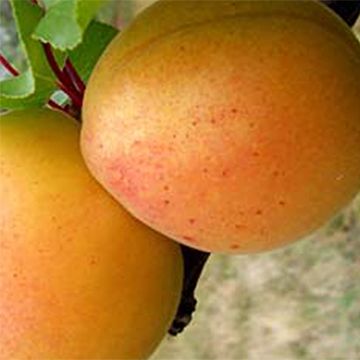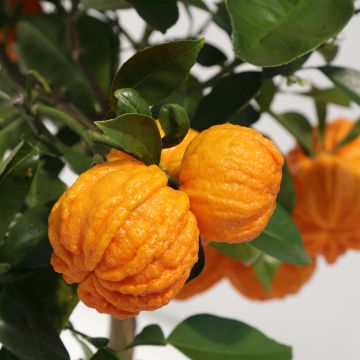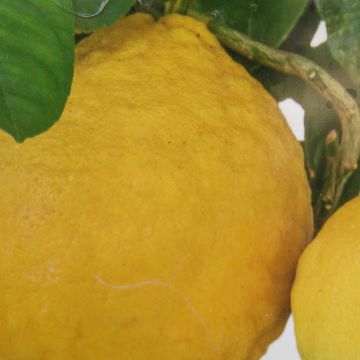

Citrus x limon Variegata - Variegated lemon tree
Citrus x limon Variegata - Variegated lemon tree
Citrus x limon Variegata
Variegated lemon tree
Special offer!
Receive a €20 voucher for any order over €90 (excluding delivery costs, credit notes, and plastic-free options)!
1- Add your favorite plants to your cart.
2- Once you have reached €90, confirm your order (you can even choose the delivery date!).
3- As soon as your order is shipped, you will receive an email containing your voucher code, valid for 3 months (90 days).
Your voucher is unique and can only be used once, for any order with a minimum value of €20, excluding delivery costs.
Can be combined with other current offers, non-divisible and non-refundable.
Why not try an alternative variety in stock?
View all →This plant carries a 6 months recovery warranty
More information
We guarantee the quality of our plants for a full growing cycle, and will replace at our expense any plant that fails to recover under normal climatic and planting conditions.
Description
The Variegated Lemon Tree (Citrus x limon variegata) is an irresistible variety of citrus tree. Its variegated foliage in green and cream, its lemons marbled with yellow and green, and the sweet fragrance of its white flowers will delight lovers of Mediterranean plants. Both decorative and fruitful, its many qualities are appreciated in a stylish container, or even planted directly in the ground where the climate allows. In winter, potted specimens should be sheltered in an orangery or a lightly heated conservatory.
The Variegated Lemon Tree is a small tree belonging to the botanical Rutaceae family, like all citrus trees. This variety originated from a spontaneous mutation discovered in 1931 in Burbank, California, on a ‘Eureka’ lemon tree (the Four Seasons Lemon Tree). The species Citrus limon has been cultivated for centuries around the Mediterranean basin and in subtropical regions.
The 'Variegata' lemon tree is a citrus tree with a bushy, slightly spreading habit, reaching 2 to 3 metres in height with a similar spread when grown in the ground. In pots, its growth is more restrained, maintaining a compact size suitable for patios and balconies. Its evergreen, alternate and lanceolate leaves measure between 8 and 12 cm in length. They are variegated with green and creamy yellow to creamy white, sometimes with slightly pinkish hues on young shoots. This characteristic gives the tree a unique luminosity and elegance. Young stems are green and may bear a few short, sharp thorns. As it ages, the trunk's bark becomes rougher and greyer.
The Variegated Lemon Tree produces white flowers with purplish hues, in small axillary clusters. Each flower measures about 2 to 3 cm in diameter and emits a sweet, intoxicating fragrance, highly attractive to pollinators. The main flowering occurs in spring, but secondary blooms may appear in late summer or autumn, particularly in favourable climates.
The marbled lemon of this variety is another ornamental feature. Its smooth, thin skin is striped with green and yellow, turning uniformly yellow when ripe. Inside, its pinkish pulp is juicy, fragrant, and slightly less acidic than that of standard lemons. These fruits are juicy and can be used in cooking as well as for preparing beverages. The main harvesting periods typically occur between October and November, then between March and April, though this may vary depending on climatic conditions and cultivation practices.
The Variegated Lemon Tree has moderate growth. It is relatively frost-sensitive and struggles to withstand temperatures below -4 to -5°C. It is therefore recommended to grow it in a pot outside of Mediterranean coastal areas so it can be sheltered in winter in an orangery, unheated greenhouse, or lightly heated conservatory.
Uses: Valued as much for its ornamental appeal as for its fruit, the Lemon Tree holds a prominent place in global culinary traditions. Its fresh, tangy flavour enhances both sweet and savoury recipes. Its juice adds a refreshing touch to drinks and cocktails while elevating sauces and carpaccios. Its intensely fragrant zest enhances pastries and desserts.
Beyond its gastronomic role, the lemon tree is a medicinal plant with properties recognised for centuries. Now validated by science, its benefits are utilised in phytotherapy and aromatherapy. Its essential oil, extracted from the zest, is prized in perfumery. As lemons are easy to preserve, they were historically carried on ships to prevent scurvy due to their high vitamin C content. Lastly, its dense, robust wood is used in cabinet-making for crafting refined pieces.
Like all Citrus, the Variegated Lemon Tree contains essential oil pockets in its leaves, flowers, and fruits, often visible to the naked eye. These are extracted through distillation (flower and leaves) or pressing (zest) to produce essential oil with dermatological, cosmetic, tonic, and disinfectant properties. The fragrance of the essential oil is described as fresh, pleasant, sweet, fruity, and lemony.
Flowering and pollination: The Variegated Lemon Tree is a self-fertile bush, meaning a single specimen is sufficient for complete pollination and fruiting. However, if your citrus tree remains permanently indoors, pollinators will occasionally need access, or if you have a delicate touch, you may assist pollination with a brush.
Citrus x limon Variegata - Variegated lemon tree in pictures
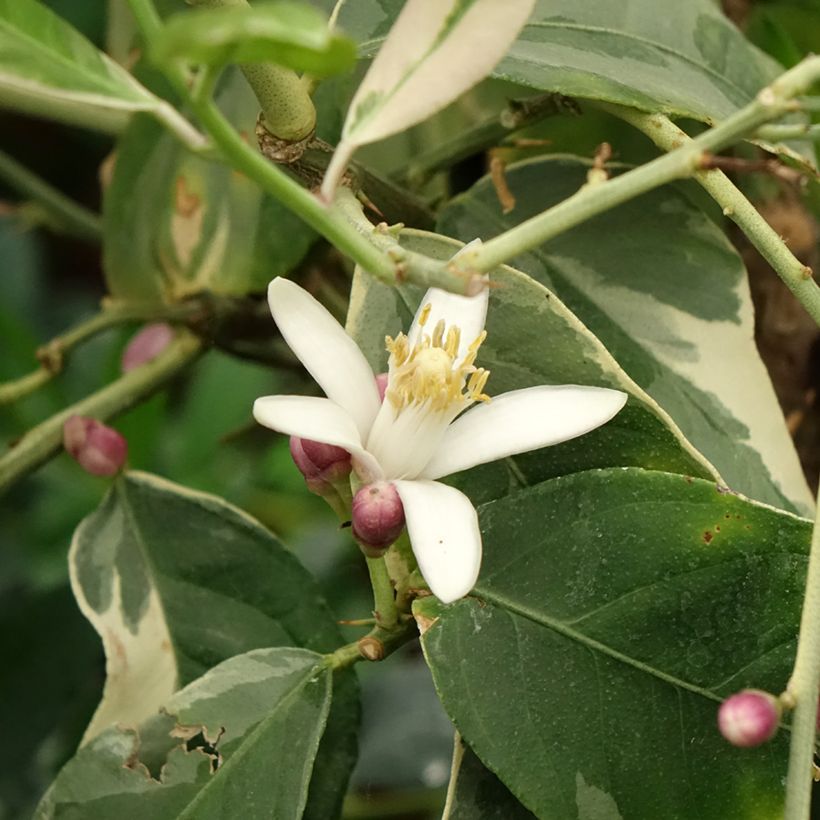

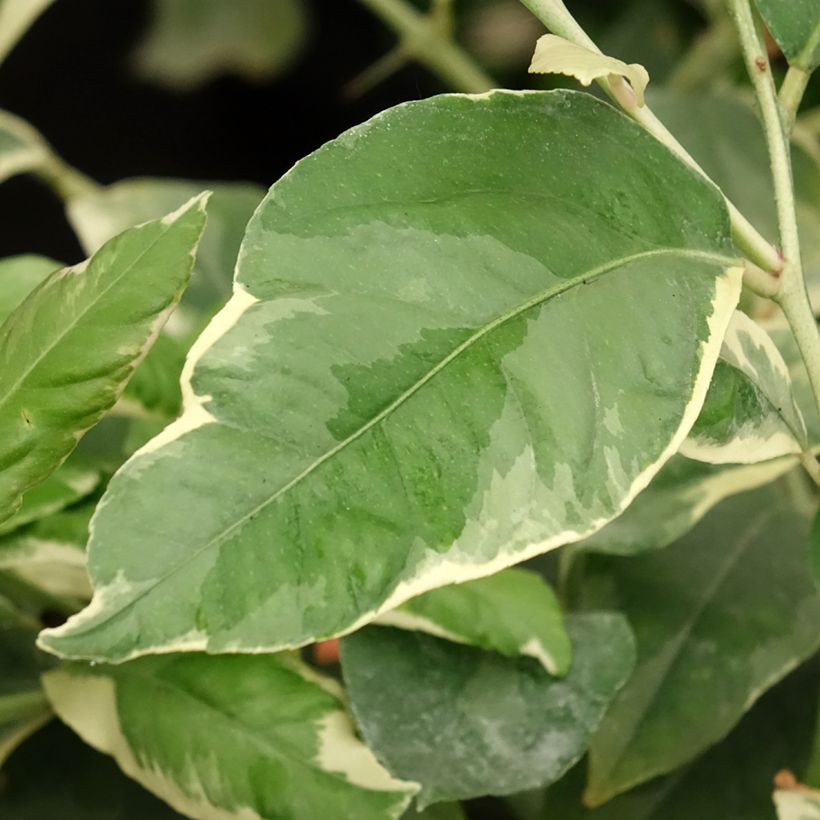

Plant habit
Fruit
Flowering
Foliage
Botanical data
Citrus
x limon
Variegata
Rutaceae
Variegated lemon tree
Cultivar or hybrid
Other Lemon trees
View all →Planting and care
Planting in open ground: The Variegated Lemon Tree prefers slightly acidic to neutral, non-calcareous soils that are always moist and fertile. It is only advisable to plant it in open ground if you live along the Mediterranean coast. The best time for planting is in early spring, during March and April. Start by watering the root ball to moisten it through capillary action. Dig a hole four to five times the volume of the root ball. If your soil is calcareous, amend it with ericaceous soil. If it is heavy and compact, lighten it by adding one-third sand. Citrus trees do not appreciate calcareous or poorly draining soils, as they dislike having their roots in stagnant water. Be careful not to bury the collar, then firmly tamp down the soil. Citrus plants are naturally greedy: in all cases, add well-decomposed compost, humus, or a "special citrus fertiliser". Choose a sunny but not scorching spot for your bush, sheltered from the wind to prevent foliage from drying out and away from any sea spray.
Pot planting: In all other regions, Citrus trees should be planted in pots and moved to a greenhouse or cold frame in winter, then back outdoors once the frosts have passed. Pot planting or repotting should be done in late summer. Choose a pot slightly larger than the root system, as citrus trees dislike feeling cramped. Moisten the root ball thoroughly. To improve drainage, line the bottom of the pot with clay pebbles. Loosen the root ball and prepare a mix of two-thirds garden soil and one-third "special citrus compost". Water generously. Opt for terracotta or breathable pots.
Citrus trees need plenty of water to thrive. Your Lemon Tree, especially when kept indoors, should be watered daily with non-calcareous water, and the soil should remain consistently moist. Similarly, feed regularly: every 6 months for slow-release granular fertiliser or every 3 waterings for liquid fertiliser. Yellowing of the leaves, excluding the veins, indicates chlorosis due to excess lime: apply sequestrene and fertiliser to your lemon tree.
Planting period
Intended location
Care
Planting & care advice
This item has not been reviewed yet - be the first to leave a review about it.
Similar products
Haven't found what you were looking for?
Hardiness is the lowest winter temperature a plant can endure without suffering serious damage or even dying. However, hardiness is affected by location (a sheltered area, such as a patio), protection (winter cover) and soil type (hardiness is improved by well-drained soil).

Photo Sharing Terms & Conditions
In order to encourage gardeners to interact and share their experiences, Promesse de fleurs offers various media enabling content to be uploaded onto its Site - in particular via the ‘Photo sharing’ module.
The User agrees to refrain from:
- Posting any content that is illegal, prejudicial, insulting, racist, inciteful to hatred, revisionist, contrary to public decency, that infringes on privacy or on the privacy rights of third parties, in particular the publicity rights of persons and goods, intellectual property rights, or the right to privacy.
- Submitting content on behalf of a third party;
- Impersonate the identity of a third party and/or publish any personal information about a third party;
In general, the User undertakes to refrain from any unethical behaviour.
All Content (in particular text, comments, files, images, photos, videos, creative works, etc.), which may be subject to property or intellectual property rights, image or other private rights, shall remain the property of the User, subject to the limited rights granted by the terms of the licence granted by Promesse de fleurs as stated below. Users are at liberty to publish or not to publish such Content on the Site, notably via the ‘Photo Sharing’ facility, and accept that this Content shall be made public and freely accessible, notably on the Internet.
Users further acknowledge, undertake to have ,and guarantee that they hold all necessary rights and permissions to publish such material on the Site, in particular with regard to the legislation in force pertaining to any privacy, property, intellectual property, image, or contractual rights, or rights of any other nature. By publishing such Content on the Site, Users acknowledge accepting full liability as publishers of the Content within the meaning of the law, and grant Promesse de fleurs, free of charge, an inclusive, worldwide licence for the said Content for the entire duration of its publication, including all reproduction, representation, up/downloading, displaying, performing, transmission, and storage rights.
Users also grant permission for their name to be linked to the Content and accept that this link may not always be made available.
By engaging in posting material, Users consent to their Content becoming automatically accessible on the Internet, in particular on other sites and/or blogs and/or web pages of the Promesse de fleurs site, including in particular social pages and the Promesse de fleurs catalogue.
Users may secure the removal of entrusted content free of charge by issuing a simple request via our contact form.
The flowering period indicated on our website applies to countries and regions located in USDA zone 8 (France, the United Kingdom, Ireland, the Netherlands, etc.)
It will vary according to where you live:
- In zones 9 to 10 (Italy, Spain, Greece, etc.), flowering will occur about 2 to 4 weeks earlier.
- In zones 6 to 7 (Germany, Poland, Slovenia, and lower mountainous regions), flowering will be delayed by 2 to 3 weeks.
- In zone 5 (Central Europe, Scandinavia), blooming will be delayed by 3 to 5 weeks.
In temperate climates, pruning of spring-flowering shrubs (forsythia, spireas, etc.) should be done just after flowering.
Pruning of summer-flowering shrubs (Indian Lilac, Perovskia, etc.) can be done in winter or spring.
In cold regions as well as with frost-sensitive plants, avoid pruning too early when severe frosts may still occur.
The planting period indicated on our website applies to countries and regions located in USDA zone 8 (France, United Kingdom, Ireland, Netherlands).
It will vary according to where you live:
- In Mediterranean zones (Marseille, Madrid, Milan, etc.), autumn and winter are the best planting periods.
- In continental zones (Strasbourg, Munich, Vienna, etc.), delay planting by 2 to 3 weeks in spring and bring it forward by 2 to 4 weeks in autumn.
- In mountainous regions (the Alps, Pyrenees, Carpathians, etc.), it is best to plant in late spring (May-June) or late summer (August-September).
The harvesting period indicated on our website applies to countries and regions in USDA zone 8 (France, England, Ireland, the Netherlands).
In colder areas (Scandinavia, Poland, Austria...) fruit and vegetable harvests are likely to be delayed by 3-4 weeks.
In warmer areas (Italy, Spain, Greece, etc.), harvesting will probably take place earlier, depending on weather conditions.
The sowing periods indicated on our website apply to countries and regions within USDA Zone 8 (France, UK, Ireland, Netherlands).
In colder areas (Scandinavia, Poland, Austria...), delay any outdoor sowing by 3-4 weeks, or sow under glass.
In warmer climes (Italy, Spain, Greece, etc.), bring outdoor sowing forward by a few weeks.






























